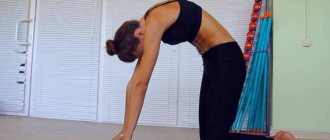© undrey — stock.adobe.com
Share:
What you need
- Horizontal bar
- Barbell
- Dumbbells
Continuing to consider individual areas of fitness, we cannot fail to mention the Tabata protocol. This training approach to interval training was originally developed by a Japanese scientist as an effective means of weight loss. Previously used as an alternative to cardio exercise, it has grown into a full-fledged training method, which is now used on a par with workout or crossfit.
General information
The history of the protocol begins in 1996, when Professor Izumi Tabata invented this technique as part of his work on a method for effective weight loss. The protocol involved combining the incompatible: extremely short training sessions with high efficiency. As practice has shown, this turned out to be not a myth, but a reality. Thus, after conducting research on two groups, Professor Tabata found that those training using his method burn fat 80% more efficiently compared to people using the classical training method. You can read more about the research in the source (English).
What is the Tabata protocol? First of all, this is a training approach that combines:
- accessibility for everyone;
- high target efficiency;
- interval loads.
In a separate article, we have already described interval training as a more effective way to lose weight compared to long hours of running. Tabata is a whole method based on interval training.
Exercises in the Tabata protocol provide a greater load than, for example, interval running. In addition, the principle itself includes:
- Working out all muscle groups in a circle. For this, multi-stage exercises are used (burpees, etc.) or a complex of several multi-joint exercises performed sequentially (push-ups, squats, presses).
- The training always takes place with a timer and a partner. Each exercise must be performed a certain number of times in a specified time, or the maximum number of times in a minimum amount of time (usually 20 to 25 seconds).
- Reducing the rest time between sets to 10 seconds. This is enough to fill the body with oxygen, but not enough to give muscle tissue a rest.
- Work always takes place in a certain pulse zone (much higher than the fat burning zone). Therefore, all training is carried out using a heart rate monitor.
Tabata workout for men
The modern rhythm of life makes it impossible to devote a lot of time to sports. For those who have difficulty with time, but strive for beauty and health, Tabata is perfect; it is known that this is a universal way to keep yourself in good shape and strengthen the body's defenses. Even 15 min. daily training will bring good results. In addition, Tabata for men is an exercise that affects not only physical performance, but also helps cope with stress by improving the functioning of the endocrine system, which is responsible for the synthesis of happiness hormones.
Tabata complex for weight loss for men
It is recommended to include exercises in the Tabata complex for men based on individual goals, objectives, body characteristics and health status at the initial stage. If a man plans to get rid of belly fat, then exercises must be selected that involve all the abdominal muscles. For those who, in their opinion, have excess in the hip area (and this also happens), then the direction will be completely different.
We will look at an example of a set of workouts aimed at losing weight in the abdominal area:
- Oblique twists. Lying on your back, hands clasped at the back of your head, alternately you need to reach with your right and left elbow to the knee of your opposite leg.
- Lying on your back, raise your legs, slightly bent at the knees, hands clasped at the back of your head. Without changing the position of your legs, lift your shoulders and stretch forward and upward.
- Lying on your back, arms along the body, without lifting your lower back, raising and lowering straight legs.
- Running at close range. Starting position – lying down. Trying not to sway, you need to alternately lift your legs, bent at the knees to chest level.
Tabata for men over 50 years old
By and large, the Tabata system is very flexible and variable, which provides an excellent opportunity to adapt it to the individual needs and capabilities of any healthy person. As for classes for men who have crossed the half-century mark, adjustments need to be made taking into account age-related characteristics. To do this, you need to reduce the frequency, duration and intensity of exercise by 25%. This figure is exaggerated and may vary depending on physical capabilities and general health.
Of all the previously proposed exercises, it is worth excluding hard ones, those that require too much effort or place an excessive load on the joints for this age. Everything is very individual, but it is better not to include burpees, deep squat jumps, running while lying down, or classic push-ups in the program. It is worth remembering about Tabata that this is a very intense training in its essence, so the most harmless exercises for older people can be called the static-dynamic types presented below.
Advantages
The Tabata protocol has a number of advantages over classical training methods:
- Effective for both general weight loss and drying. Thanks to the intense work of the heart, your muscles do not have time to undergo serious catabolic reactions, while fat becomes a more accessible source of energy before glycogen in conditions of lack of oxygen. But when cutting, it is still recommended to combine it with classical strength training in order to minimize muscle loss.
- Minimal risk of injury. If you warm up and use the classic Tabata protocol, there is very little risk of injury.
- Short training time. The Tabata protocol can be used separately from other workouts. Class time rarely exceeds 10-20 minutes, which allows you to make room for them even in an extremely busy schedule.
- Allows you to prepare ligaments and tendons within the periodization system. The Tabata protocol allows you to train your heart, increase aerobic and anaerobic endurance, master the basic technique of workout exercises, and at the same time tone muscle tissue.
© Vadym — stock.adobe.com
How the research took place
The American Council on Exercise enlisted the help of scientists from the University of Wisconsin, who researched what type of exercise is most suitable for people who lead a relatively sedentary lifestyle and want to get started with fitness.
The experiment involved 65 people (23 men and 42 women) aged 18 to 28 years, leading a relatively sedentary lifestyle. It is worth noting that at various stages of the study, 10 participants were excluded from further participation. To determine the aerobic abilities of the participants, a test on a bicycle ergometer was conducted before the experiment. During the test, the level of maximum heart rate, respiratory metabolism (oxygen intake and release of carbon dioxide and water), and the level of perceived exertion (psychophysiological training intensity scale) of each participant were measured.
A second cycle ergometer test was conducted to measure the participants' anaerobic power (which was measured in watts (W) per 1 kg of body weight), peak power output and average power output were measured.
After preliminary tests, the participants were divided into 3 groups depending on their capabilities - the strongest beginners were sent to group 2, the weakest to group 1:
1. Moderate Intensity Group: This group performed continuous 20-minute training sessions at 90% of individual ventilation threshold. This corresponds to a moderate to vigorous intensity level as defined by the American College of Sports Medicine.
The ventilatory threshold is a marker of the intensity threshold at which lactic acid begins to accumulate in the blood and the respiratory rate increases to a level at which a person can no longer speak during exercise.
2. Tabata Group : The second group trained using the Tabata method, alternating very short but very intense 20-second training segments (at 170% of peak aerobic power) with 10-second recovery segments of lower intensity.
In total, this group performed 8 approaches, while the main part of the workout (excluding warm-up and cool-down) took only 4 minutes .
Peak aerobic power (aka VO2peak) is the maximum level of oxygen consumption that can be achieved during a set training intensity. Not to be confused with VO2max - the body's physiological limit for oxygen consumption and use per unit of time during physical activity. By the way, VO2max is closely related to the functional abilities of the heart and is considered the main indicator of a person’s physical (cardiorespiratory) fitness (ACSM’s Guidelines for Exercise Testing and Prescription, 9th Ed.).
3. Mayer's group : The third group trained HIIT style, but used a lower intensity: 30 seconds of moderate intensity training intervals (at 100% of VO2peak) alternated with 60 seconds of low intensity. A total of 13 approaches were performed, and the main part of the workout took 20 minutes .
In addition to the main training portion, all 3 groups completed an identical 5-minute warm-up and cool-down. At the same time, the training itself was carried out using bicycle ergometers.
Contraindications
The Tabata protocol has no specific contraindications for classes. All warnings are standard for sports:
- Having problems with the cardiovascular system.
- Diseases of the digestive tract.
- Having problems with ligaments and tendons.
- Pregnancy.
- Hypotension and hypertension.
- Diabetes mellitus type 1.
- Atherosclerosis.
- Obesity of the 2nd degree and higher.
The latter is due to the fact that with the high intensity of the Tabata protocol, people are likely to damage their joints and get heart problems, including athlete's heart syndrome.
Although training according to the system is not contraindicated for beginners, even in the absence of any physical form, it would be better for them to first practice general physical fitness for 1-2 months, and then move on to the protocol. Otherwise, the system suits everyone.
Editor's note: Although the Tabata protocol does not involve a warm-up, we still recommend a full body warm-up before performing the complexes, as this reduces the risk of injury and stress on the heart, which is especially important for people over 35 years of age.
Types of protocol
Over the years of application, the exercises of the Tabata protocol have acquired a wide variety, which allows one to develop one or another quality for an athlete. All this made it possible to use the Tabata protocol not only as a separate treatment discipline, but also as an element of a complex within a full-fledged training.
You can download and print the leaflet using the link.
| Tabata in a row | Tabata non-stop | Circular Tabata | |
| Incoming exercises | Circular exercises for each muscle group. These are the basic complexes:
| Narrow specialization, including easy and complex exercises:
| Each exercise is performed sequentially. The set can be anything. Heavy basic exercises like:
|
| Load type | Aerobic. Development of maximum respiratory endurance. | Aerobic. Development of heart muscle parameters. | Aerobic. The development of indicators depends on the exercises used. |
| Training time | From 4 to 8 minutes. | From 3 to 10 minutes. | Up to 20 minutes. |
| Peculiarities | After completing each exercise, there is a 10-second rest, after which the transition to the next begins. | There is no rest between exercises. Instead of a break, use light cardio, including running or planking. | The exercises are performed sequentially. A distinctive feature is the ability to rest between different exercises for up to 40 seconds. May include more exercises than previous options. |
| Efficiency | Develops endurance. | Used for weight loss/drying. | It best develops the functional indicators of aerobic and anaerobic glycolysis in muscle tissue. |
Tabata workout for women
The Tabata protocol for women who cannot devote much time to sports training is a real panacea. In addition to low time consumption and high efficiency, training can be aimed not only at maintaining and improving physical fitness. Many people use Tabata training to lose weight or get rid of cellulite because it is very convenient and effective.
Tabata - workout for women's weight loss
The Tabata system for weight loss is perfect. We have already mentioned the impressive calorie consumption in one session; all that remains is to decide on the exercises that are best suited for fat-burning training.
- Jumping Jack (jumping on the feet with the legs brought together and spread while jumping and simultaneous clapping of the hands above the head after the starting position).
- Push-ups of different types (both full and from the knees).
- Squats and lunges.
- Exercises for the back and abs in any variant.
- Burpee.
Tabata for cellulite
Many people are interested in whether the Tabata complex helps in the fight against cellulite and, if so, how. It’s simple, this training option copes well with most of the problems that cause the appearance of orange peel:
- poor blood circulation in certain areas;
- stagnation of lymph in tissues;
- excess fluid;
- poor metabolism at micro and macro levels.
Exercises for training aimed at combating cellulite are selected based on which areas are the most problematic. In most cases, this is the area of the buttocks and thighs, so it is recommended to use a combination of exercises that effectively pump these muscle groups. For fat-burning tabata exercises for losing weight and fighting cellulite, you should choose the following:
- Lunges and reverse lunges.
- Sumo squats.
- Jumping out of a half squat.
- Raising legs in a vertical plane from a deep squat.
- Deep step with quick change of legs.
- Intense jogging in place with high hip lifts
Tabata in crossfit
CrossFit is a direction that has absorbed the best from different areas of fitness, but few people know that the Tabata protocol played a decisive role in the formation of CrossFit as a sport.
It's all about the principles of CrossFit and Tabata, which have a lot in common:
- High intensity interval training.
- Priority over the aerobic component. Many CrossFit complexes, although performed with more rest than in Tabata, still involve working at maximum speed with minimal rest.
- Variety of exercises.
- Using light exercises to work out as many muscle groups as possible. A typical example is burpees. This exercise works almost the entire body in a few repetitions.
- Lack of narrow specialization. Both Tabata and CrossFit have exercises of different types, ranging from easy calisthenics to more complex workout elements.
In CrossFit, entire workouts are often used using the Tabata protocol, for example, working with a balance board in this mode or performing heavy basic exercises without scaling.
Recipes for healthy eating
Recipe for stewed green beans with tomatoes
- 1.3 g Protein
- 3.1 g Fat
- 3.7 g Carbohydrates
- 46.7 kcal
45-60 min.
- #vegetarian dish
- #second course
- #for vegans
- #breakfast
- #low calorie
- #dinner
- #roasting
- #vegetables
- #tomato
- #green beans
- #only fruits and vegetables
- #dinner
Other recipes
What is more effective: Tabata, HIIT or moderate intensity training - results
As a result, after 8 weeks of training, a gradual increase in peak and average anaerobic power output was revealed in all 3 groups:
1. Moderate intensity group - increase by an average of 50W, 2. Tabata group - increase by an average of 70W, 3. Mayer group - increase by an average of 45 W.
Table of progress of participants' power output over 8 weeks (Table No. 1):
* The dotted line is the moderate intensity group, the dotted line is the Mayer group, the thick line is the Tabata group.
It is noted that despite the significant increase in power output levels, indicators such as percentage of heart rate reserve (the difference between a person's maximum heart rate and a person's resting heart rate), as well as lactic acid levels and perceived exertion remained virtually unchanged over the 8-week trial.
All 3 groups also showed an increase in maximum oxygen uptake (VO2max) of approximately 18%.
When experts deciphered the data in terms of body weight of the participants, all subjects showed significant improvements in all components, but without significant differences between groups.
Recalculation of the total sum of all indicators per kilogram of body weight of the participants showed that the overall training abilities of the participants increased by an average of 6-10%, but without a significant difference between the groups.
What is more effective: Tabata, HIIT or moderate intensity training - results











